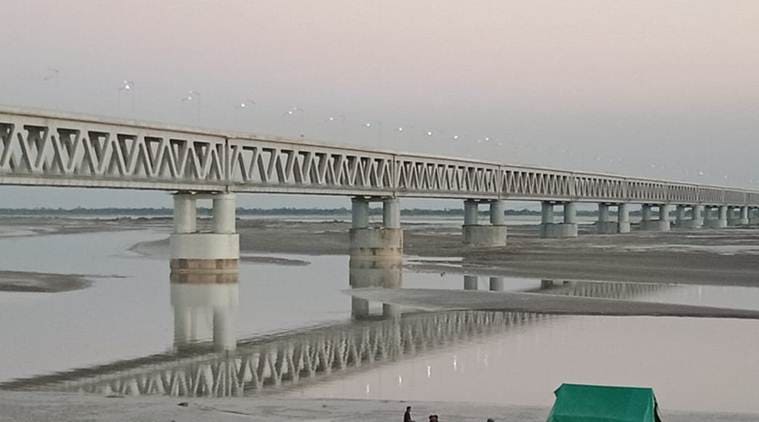A bridge across the Brahmaputra
Bogibeel bridge is a big step towards resolving connectivity gaps in the region.

Bogibeel, the longest rail-road bridge of India, spanning nearly five-km across the Brahmaputra, was inaugurated by Prime Minister Narendra Modi on December 25. It will link Dibrugarh with North Lakhimpur district of Assam and parts of eastern Arunachal Pradesh. The event, marked with much fanfare, was hailed by many as a historic milestone in the development of the Northeastern region.
One could wonder, what is so special about a bridge that has taken 16 years to complete? Should we really be rejoicing over the completion of an infrastructure project, which has missed its timelines several times? The brouhaha over a bridge may even invite disdain in the drawing rooms of Lutyens Delhi. But for thousands of poor people, living in eastern Assam and Arunachal Pradesh, this is truly a momentous occasion.
One could wonder, what is so special about a bridge that has taken 16 years to complete? Should we really be rejoicing over the completion of an infrastructure project, which has missed its timelines several times? The brouhaha over a bridge may even invite disdain in the drawing rooms of Lutyens Delhi. But for thousands of poor people, living in eastern Assam and Arunachal Pradesh, this is truly a momentous occasion.
Sixty eight years after being ravaged by a devastating earthquake and the ensuing floods, Dibrugarh is reclaiming its lost glory. It used to be a thriving centre of the plantation industry during the colonial times. For the people of the region, it remains a hub of higher education and medical treatment. However, for decades, the only recourse for people to cross the Brahmaputra would be to chug along for over an hour, in a diesel propelled ferry, which would also carry their vehicles and goods, even cattle. Crossing the river could be a costlier proposition than flying between Mumbai and Goa. All this is set to change. Commissioning the bridge has reduced the journey time across the river to less than five minutes, bringing relief to people living in these remote parts.
The single biggest factor which has shackled the development of the Northeast region is the absence of robust connectivity. A maze of river systems across Arunachal Pradesh, with their confluence in the Brahmaputra, have posed an enormous challenge. The commissioning of Bogibeel, therefore, is a harbinger of hope. The bridge’s significance goes well beyond the succour to local residents. It has the potential to infuse economic dynamism in the region and provide opportunities for the expansion of tourism, industrial development and trade.
Bogibeel must be viewed alongside other infrastructure developments in neighbouring Arunachal Pradesh. The iconic Bhupen Hazarika bridge over the Lohit river was commissioned recently by the prime minister. A 7.5 km long bridge over the Dibang river was dedicated to the nation a few days ago. The Trans Arunachal Highway, has seen considerable progress, especially in the eastern part of the state. An airport has been commissioned at Pasighat, barely two hours away from Dibrugarh. One of the most pristine parts of Arunachal Pradesh has now become accessible to the rest of the world. This could give a fillip to tourism, given that the region has abundant wildlife and is ideal for river rafting and angling. However, an imaginative roadmap of tourism development, promotion and branding needs to be crafted, centred around the region’s tribal ethos.






































No hay comentarios:
Publicar un comentario